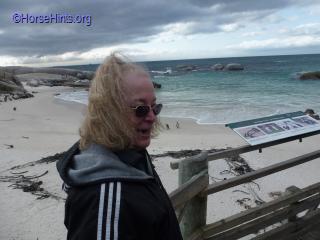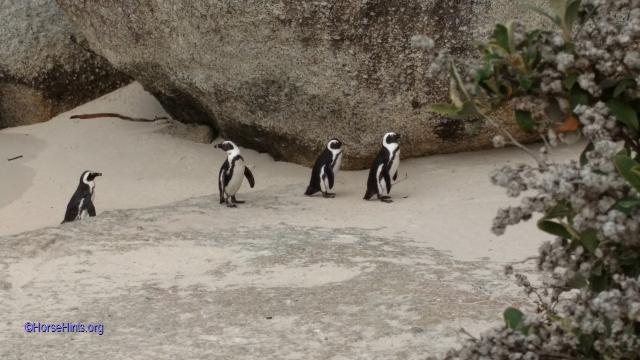




Although set in the midst of a residential area, it is one of the few sites where this vulnerable bird (Spheniscus demersus) can be observed at close range, wandering freely in a protected natural environment. From just two breeding pairs in 1982, the penguin colony has grown to about 3,000 birds in recent years. This is partly due to the reduction in commercial pelagic trawling in False Bay, which has increased the supply of pilchards and anchovy, which form part of the penguins' diet.
Bordered mainly by indigenous bush above the high-water mark on the one side, and the clear water of False Bay on the other, the area comprises a number of small sheltered bays, partially enclosed by granite boulders that are 540 million years old.
The most popular recreational spot is Boulders Beach, but the penguins are best viewed from Foxy Beach, where newly constructed boardwalks take visitors to within a few meters of the birds. It is also a popular swimming beach, although people are restricted to beaches adjacent to the penguin colony."